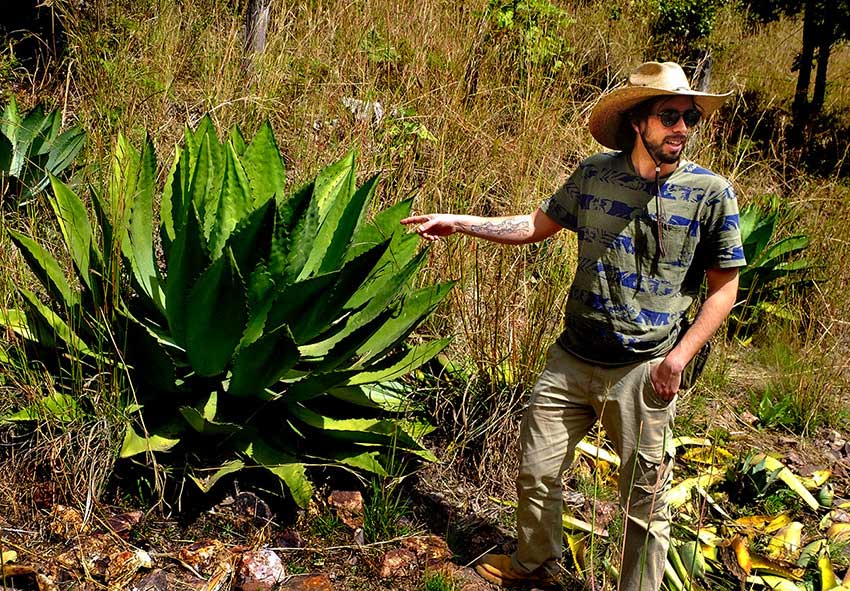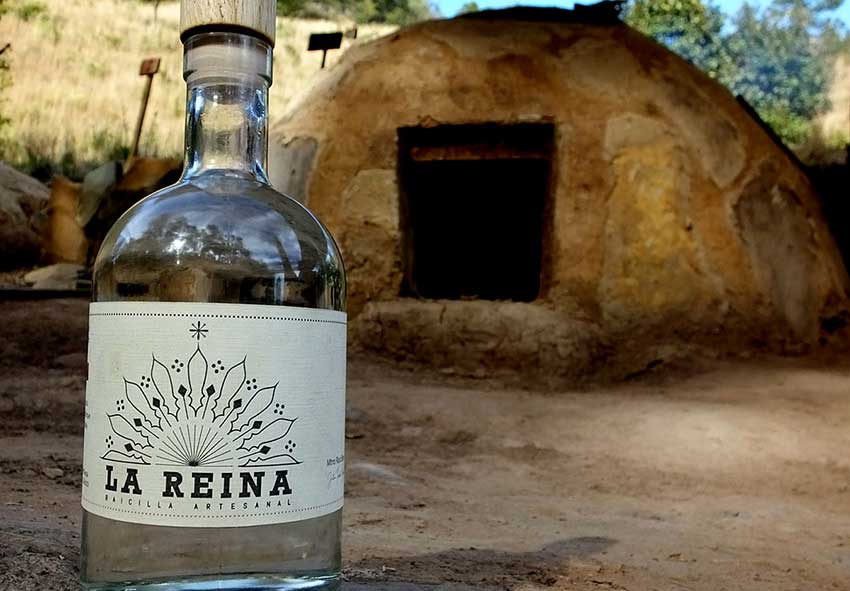“Have you ever seen how they make raicilla, John?” asked my friend JP Mercado. Well, I had been told that raicilla was a kind of moonshine made in the mountains, but beyond that I knew nothing, so when JP offered to take me to a taberna (rustic distillery) where they make it, I signed up on the spot.
“And where is that taberna located?” I asked my friend.
“In a place called Rancho Nuevo, which is 70 kilometers east of Puerto Vallarta,” Mercado replied, but when he sent me the coordinates, I stared at my map of Jalisco in disbelief. Rancho Nuevo appeared to be situated right smack in the middle of a huge empty space — with no roads visible — identified only as Sierra Jolapa, a mountain range I had never heard of.
“Well, well,” I thought, “this already sounds interesting.”
Before heading for the taberna in the hills, I tried to learn what I could about raicilla.

I found out that the mezcal industry — according researchers Zizumbo and Colunga — was probably born in 1612 in the state of Colima when the conquistadores cut down all the coconut palms on the coast in an effort to eliminate the production of a distilled spirit called tuba or vino de cocos.
The thirsty population then turned to agaves. When the Spaniards eventually got around to taxing these spirits, local people came up with a tale to tell the tax collector: “We aren’t making our drink from the piña or agave heart (which was taxable) but from its root (raicilla)” — which, of course, is the very same thing.
Finally came the day for me to visit the raicilla taberna. Early one morning JP and his wife Ana picked me up. As we drove, Ana, who had grown up in that mysterious Sierra Jolapa, told me that while traveling around Mexico and the world, she would present new friends with a gift of raicilla, knowing they would surely never have heard of it.
“But everyone who tried it was pleasantly surprised at how good it tasted and would want more.”
Eventually the owners of bars and hotels also began to ask the Mercados about this “vino del cerro” and they began to look into the question of permits and regulations that might allow the raicilla of Rancho Nuevo to be marketed commercially, as is tequila.
“Wait a minute!” I interjected. “Exactly what is the difference between raicilla and tequila?”

JP told me I might as well add sotol, bacanora, tepemete and bingarrote to my list. All of these beverages, I found out, are distilled spirits made from the juice of a cooked agave, so all of them are mezcales (actually, this is incorrect. Sotol is made from a member of the asparagus family).
Tequila is made only from the blue agave, while raicilla can be made from any one of five agaves, and so on down the list.
To complicate things, territory comes into play here. The word tequila can only be used for blue agave spirits produced in Jalisco or parts of four other states. “The denomination of origin for raicilla was unclear up to very recently,” JP told me, “but now the product is protected and can only be made in Jalisco.
“Meanwhile, we have obtained federal, state and local permits to produce our own brand of raicilla, which is called La Reina, made only in Rancho Nuevo where we are now headed.”
From Guadalajara we drove west and then north, through ever higher hills covered with oaks and feathery pine trees, perhaps Lumholtz’s pine. Following steep, narrow dirt roads we skirted the edge of a deep valley bordered on the other side by gorgeous red cliffs.
At the end of a three-hour drive, we reached La Taberna de la Reina, situated alongside a brook bubbling with clear, clean, drinkable water.

Here we were welcomed by the maestro of the taberna, Don Julio Topete Becerra, who carries on a tradition passed from father to son. Right from the spot where we stood, we could see every stage in the raicilla-making process.
The hillside above us was covered with Maximiliana agaves, which have very broad leaves. To my surprise and delight, I learned that these agaves come from seeds, not clones (as do tequila agaves), so the flowers are fertilized by bats, suggesting that every bottle of raicilla deserves a “bat-friendly” sticker.
After six to eight years, the agave is mature. Its pencas are removed (often with an axe) and the root is broken into several pieces. The next stage is cooking, which turned out a bit different from what I had seen at tequila distilleries.
The oven is made of adobe with walls half a meter thick. A hot fire is started inside the oven and allowed to burn for six hours. Once the oven walls are hot, the coals are pulled out with a long-handled rake and the chunks of piña are thrown inside. Immediately, the two openings of the oven are closed with big blocks of adobe and sealed tightly with clay.
So the agave root is not steamed or smoked, but dry-baked, giving raicilla its own distinctive taste.
The most unusual procedure in making raicilla is the one that comes next. The sweet, juicy mezcal is not run through a crusher or under a stone wheel. Instead, it is placed in a long, hollowed-out tree trunk (oak) and mashed by hand using heavy wooden pounders with long handles.
This is back-breaking work and if you visit the place, they will dare you to try doing it for just five minutes.
Once the canoe-shaped trough is filled with juice, the gooey, fibrous mixture is removed using buckets and poured into wooden barrels for fermentation.
The next stage, as in tequila-making, is distillation. This is easy to understand at La Reina, where you can see the final product dripping from the end of a long copper tube, most of which is coiled inside a barrel filled with water.
The final stage of production is aging. Don Julio dipped into a barrel and I got my first taste of properly made raicilla. What a surprise!
“This is really good!” I exclaimed. “It can hold its own against any tequila, in my book.”
“Now you can see why Ana’s friends were always pestering her for more,” said JP. “In these hills, they say, if tequila is king, raicilla is the queen.”
[soliloquy id="75623"]
If you would like to know more, or to visit the taberna in Rancho Nuevo, just leave a message at Raicilla La Reina. You’ll discover that both JP Mercado and his wife Ana speak excellent English.
The writer has lived near Guadalajara, Jalisco, for more than 30 years and is the author of A Guide to West Mexico’s Guachimontones and Surrounding Area and co-author of Outdoors in Western Mexico. More of his writing can be found on his website.
